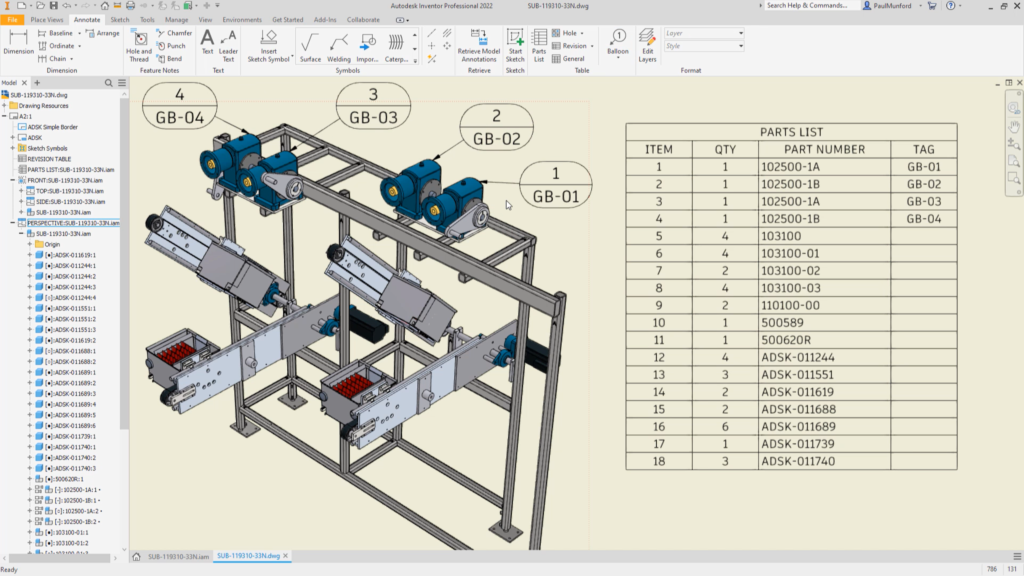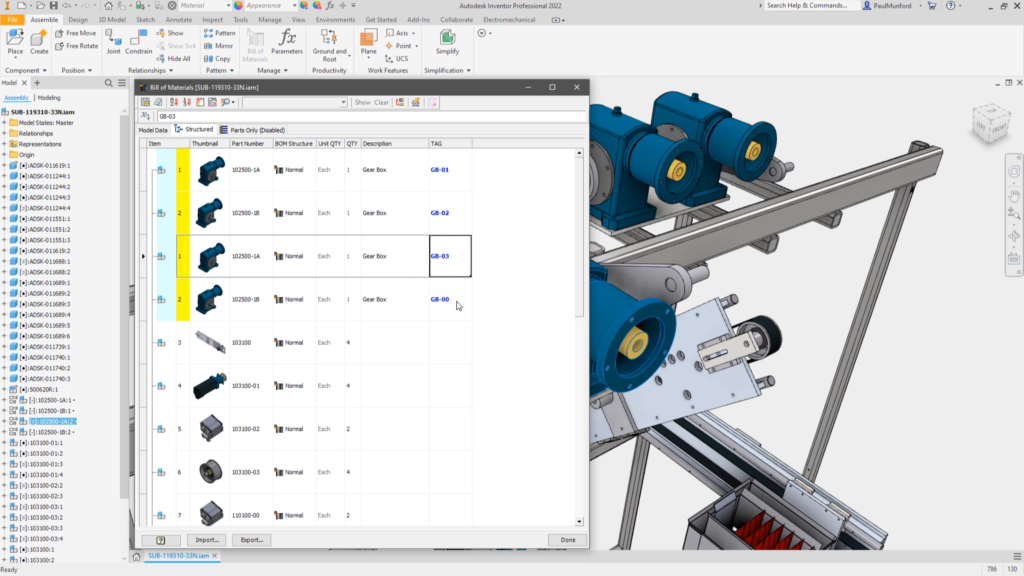
Would you like to identify each individual instance of a component in your Inventor models and drawings?
Perhaps you like to add the purpose of the component – for example ‘Inlet’ and ‘Outlet’, or a unique tracking number, or servicing information?
New Instance properties in Autodesk Inventor 2022 allow you to assign iProperty overrides to individual component instances.
Click here to find out what else is new in Autodesk Inventor 2022.

Instance properties in Autodesk Inventor 2022 allow custom iProperty data to be added or overridden for individual components
Instance Properties don’t affect the iProperties in the component files, they are stored in the assembly file.
In fact, the part file is unaware of the instance property. You could think of them as ‘Context properties’ – they are only available within the context of the containing assembly.
Instance Properties are assigned to individual component instances only and override custom iProperties.
You can view and edit instance properties in the BOM editor. A new ‘Merge instance rows’ option is available in the BOM editor.
Use your unique Instance Properties in 2D and 3D annotations and in your drawings for balloons, leader notes and parts lists.

Instance properties in Autodesk Inventor 2022 allow custom iProperty data to be added or overridden for individual components
Instance Properties:
- Assign information (tags, properties) to individual component (part, assembly) instances.
- Are stored in the direct parent assembly.
- When stored in a subassembly are available in the top assembly.
- Can be viewed as extension of custom iProperties.
- Exist separately from a components custom iProperties or can override existing custom iProperty values.
- Are created and edited in the Instance Properties or BOM dialog box.
- Can be included in parts lists, balloons, leader notes, and sketched symbols.
- If no instance properties exist, BOM, custom iProperties, parts lists, balloons, and leader notes work as in previous releases.
Use Instance Properties to:
- Override custom iProperty values for library (Content Center) components.
- Add tags from schematic diagrams to components in 3D model and use them in documentation.
- Identify location of individual components in transport boxes or in the installation.
- Separate individual instances in the BOM and parts list and add specific information to them. For example, component settings or possible component replacement.
- Add custom IDs to individual components or component instances and use them to replace Item numbers in assembly and subassembly drawings.
- Add assembling information to models. For example, assign step sequence numbers to individual assembly components, or add welding information to welded components.
Have you tried out the new Instance property functionality in Autodesk Inventor 2022? Let us know what you think?
Click here to add you suggestions on how to improve Inventor to Inventor ideas
Click here to join the Autodesk Feedback community
Click here to return to the ‘What’s New in 2022 overview blog post.


